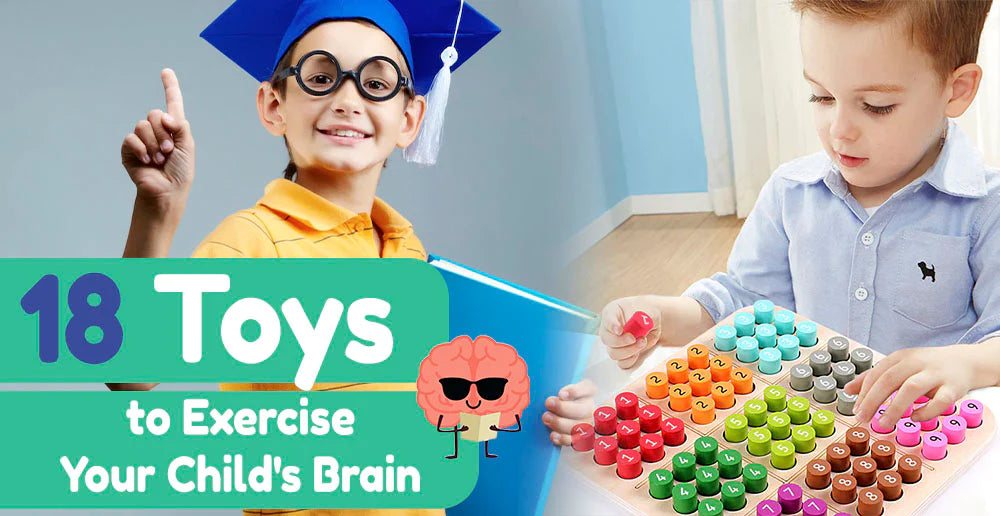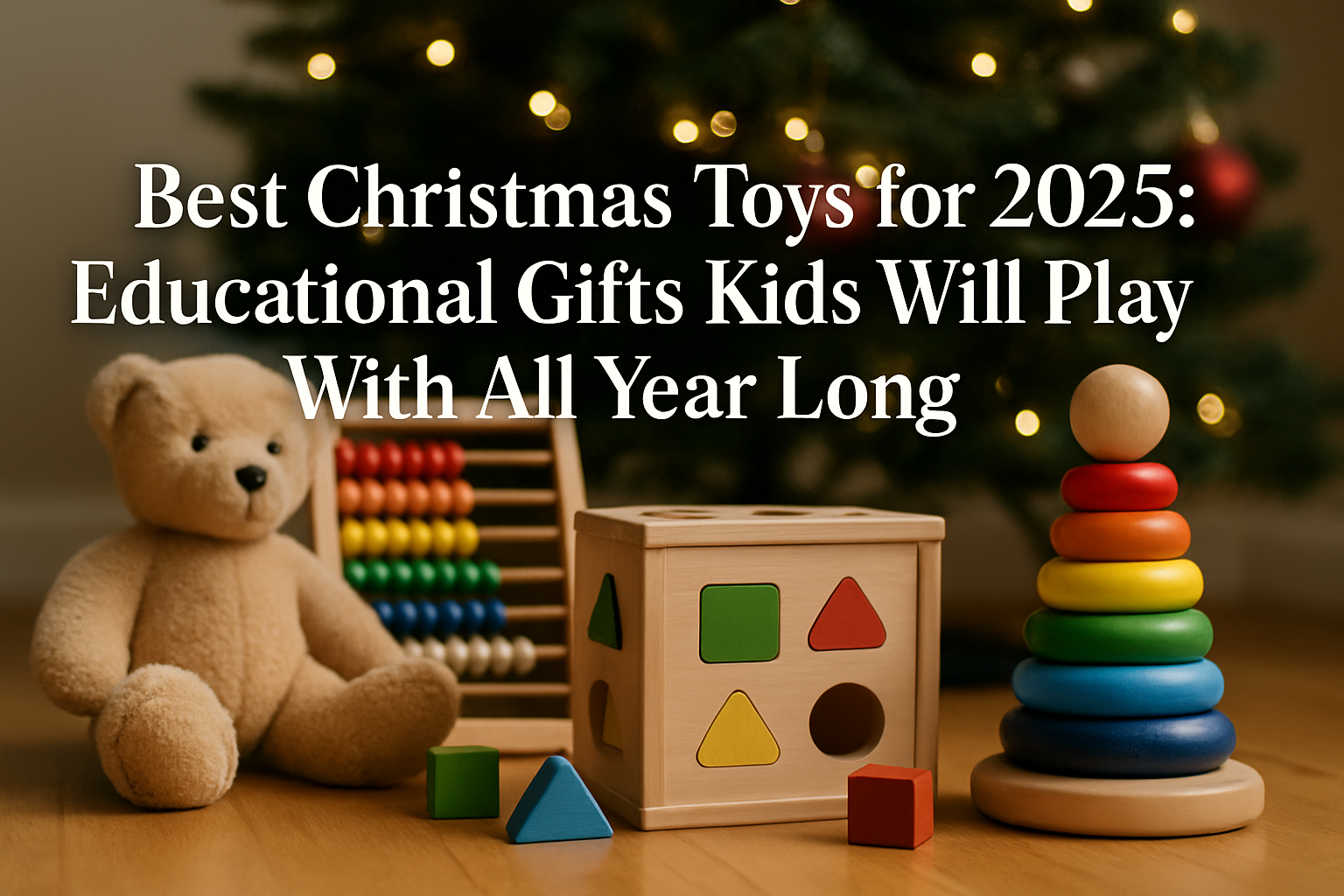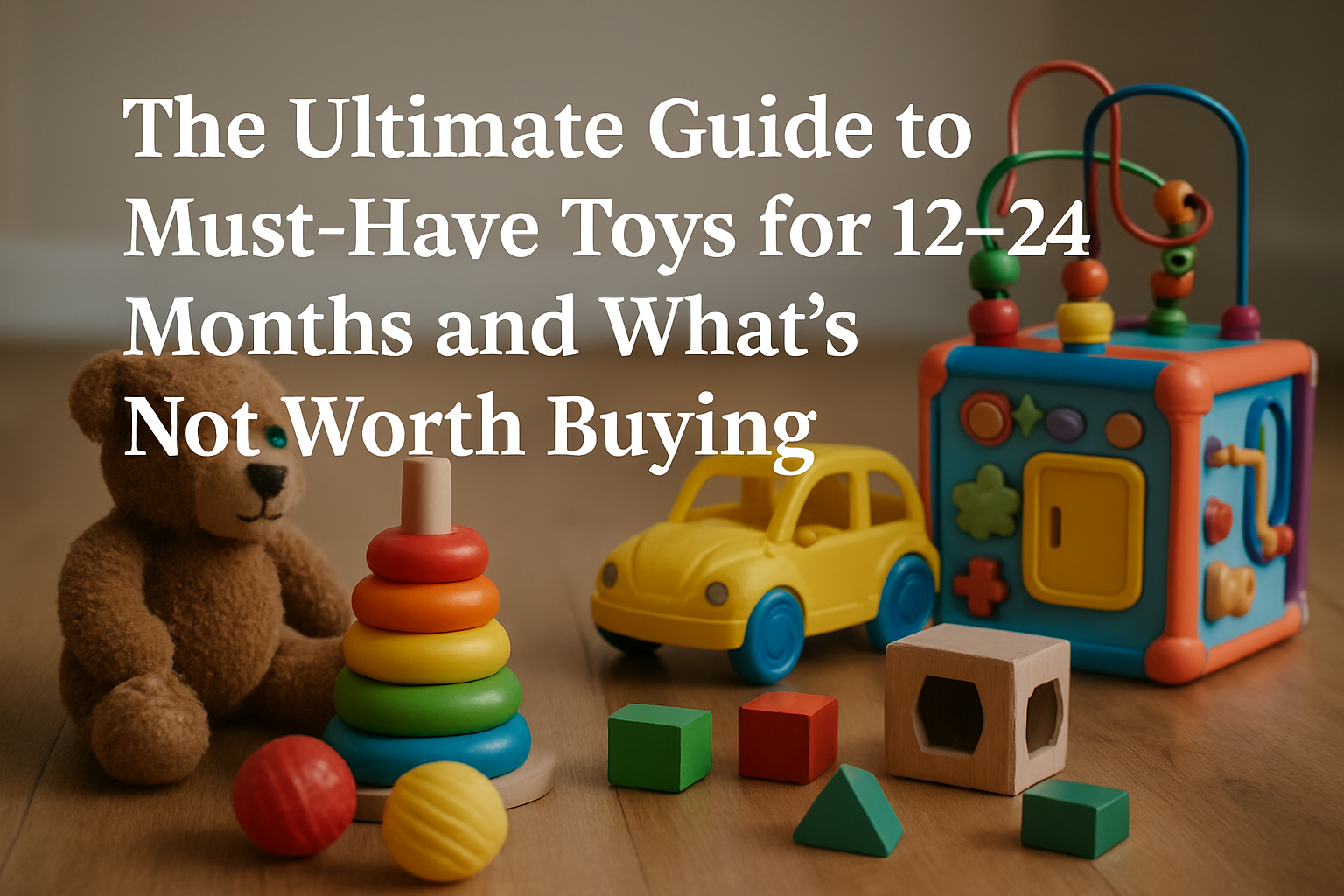Best Christmas Toys for 2025: Educational Gifts Kids Will Play With All Year Long
When shopping for toys, it's easy to get caught up in the latest fad or elec...

Add description, images, menus and links to your mega menu
A column with no settings can be used as a spacer
Link to your collections, sales and even external links
Add up to five columns
Add description, images, menus and links to your mega menu
A column with no settings can be used as a spacer
Link to your collections, sales and even external links
Add up to five columns

When shopping for toys, it's easy to get caught up in the latest fad or electronic gadget. But some of the best toys for children are actually quite simple – and have been around for centuries.
You might be wondering why bother choosing toys that specifically exercise the brain. After all, aren't all toys educational in some way?
The answer is no – many popular toys today are little more than entertainment value. They do nothing to help children learn and grow cognitively, physically, or emotionally. In fact, some studies have shown that certain types of entertainment-focused toys can actually hinder a child's development.
On the other hand, toys that encourage active play and engage a child's cognitive skills have been shown to have numerous benefits. These benefits include improved problem-solving skills, enhanced memory and attention span, greater creativity, and increased academic success later in life.
In other words, choosing toys that exercise the brain is one of the best things you can do for your child's development. So what are some great options?
This stage is where your child starts to develop basic cognitive skills like object permanence and cause and effect. Look for toys that encourage exploration and manipulation like nesting blocks, shape sorters, and pull-toys.
At this age, kids are learning how to problem solve, remember information, and pay attention. Puzzles, memory games, and simple board games are all great options. Building toys like LEGOs or wooden blocks can also help your child develop spatial awareness – an important skill for math and science later on.
At this stage, kids are starting to think more abstractly and understand concepts like time, money, and fractions. Games that involve chance, like card games or dice games, can help with critical thinking and probability. Building kits, such as a model car or airplane, can help with following instructions, planning ahead, and problem solving.
12. Card games – Card Games like Go Fish or War help children practice counting and strategic thinking.
13. Dice games – Games like Yahtzee, Chutes and Ladders, and other dice games help children understand probability and chance.
14. Building kits – Model house, airplanes, or houses help children follow instructions, plan ahead, and use problem-solving skills.
15. Science kits – Chemistry or biology kits help children learn about the world around them and conduct experiments.
16. Art supplies – Painting, drawing, and sculpting help children express their creativity and develop fine motor skills.
17. Books – Reading helps children develop vocabulary, improve comprehension, and escape into other worlds.
18. Camera – A camera can help children capture memories and document their lives. It can also help with spatial awareness, as they learn to frame a shot.
No matter what age your child is, it's important to encourage their natural curiosity and love of learning. The best toys are those that will grow with your child, providing more challenge as their skills develop. And above all, have fun!
When shopping for toys, it's easy to get caught up in the latest fad or electronic gadget. But some of the best toys for children are actually quite simple – and have been around for centuries.
You might be wondering why bother choosing toys that specifically exercise the brain. After all, aren't all toys educational in some way?
The answer is no – many popular toys today are little more than entertainment value. They do nothing to help children learn and grow cognitively, physically, or emotionally. In fact, some studies have shown that certain types of entertainment-focused toys can actually hinder a child's development.
On the other hand, toys that encourage active play and engage a child's cognitive skills have been shown to have numerous benefits. These benefits include improved problem-solving skills, enhanced memory and attention span, greater creativity, and increased academic success later in life.
In other words, choosing toys that exercise the brain is one of the best things you can do for your child's development. So what are some great options?
This stage is where your child starts to develop basic cognitive skills like object permanence and cause and effect. Look for toys that encourage exploration and manipulation like nesting blocks, shape sorters, and pull-toys.
At this age, kids are learning how to problem solve, remember information, and pay attention. Puzzles, memory games, and simple board games are all great options. Building toys like LEGOs or wooden blocks can also help your child develop spatial awareness – an important skill for math and science later on.
At this stage, kids are starting to think more abstractly and understand concepts like time, money, and fractions. Games that involve chance, like card games or dice games, can help with critical thinking and probability. Building kits, such as a model car or airplane, can help with following instructions, planning ahead, and problem solving.
12. Card games – Card Games like Go Fish or War help children practice counting and strategic thinking.
13. Dice games – Games like Yahtzee, Chutes and Ladders, and other dice games help children understand probability and chance.
14. Building kits – Model house, airplanes, or houses help children follow instructions, plan ahead, and use problem-solving skills.
15. Science kits – Chemistry or biology kits help children learn about the world around them and conduct experiments.
16. Art supplies – Painting, drawing, and sculpting help children express their creativity and develop fine motor skills.
17. Books – Reading helps children develop vocabulary, improve comprehension, and escape into other worlds.
18. Camera – A camera can help children capture memories and document their lives. It can also help with spatial awareness, as they learn to frame a shot.
No matter what age your child is, it's important to encourage their natural curiosity and love of learning. The best toys are those that will grow with your child, providing more challenge as their skills develop. And above all, have fun!

When shopping for toys, it's easy to get caught up in the latest fad or elec...

When shopping for toys, it's easy to get caught up in the latest fad or elec...
Sign up for updates, sneak peeks and a coupon for 10% OFF your first order!